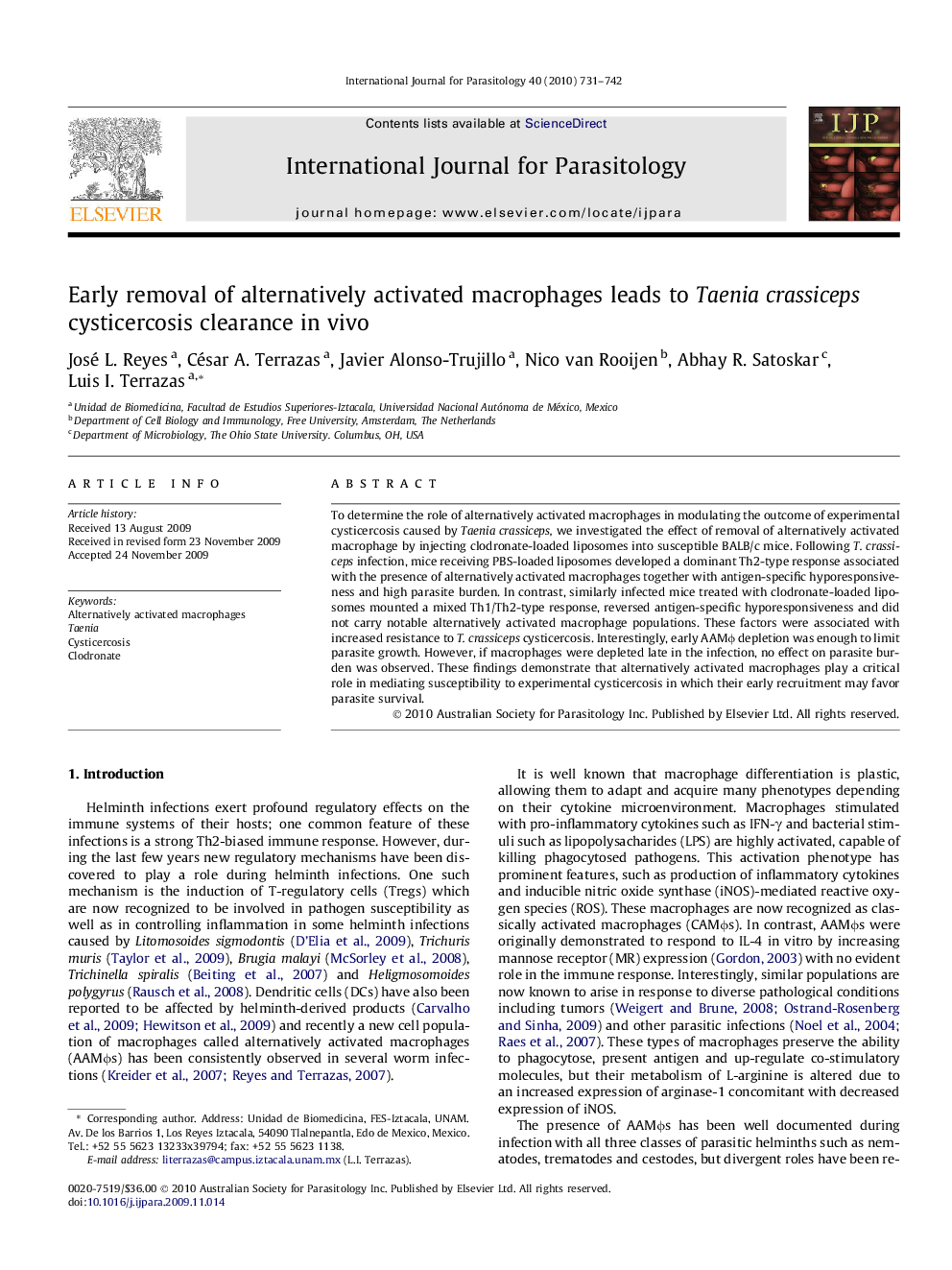| Article ID | Journal | Published Year | Pages | File Type |
|---|---|---|---|---|
| 10972781 | International Journal for Parasitology | 2010 | 12 Pages |
Abstract
To determine the role of alternatively activated macrophages in modulating the outcome of experimental cysticercosis caused by Taenia crassiceps, we investigated the effect of removal of alternatively activated macrophage by injecting clodronate-loaded liposomes into susceptible BALB/c mice. Following T. crassiceps infection, mice receiving PBS-loaded liposomes developed a dominant Th2-type response associated with the presence of alternatively activated macrophages together with antigen-specific hyporesponsiveness and high parasite burden. In contrast, similarly infected mice treated with clodronate-loaded liposomes mounted a mixed Th1/Th2-type response, reversed antigen-specific hyporesponsiveness and did not carry notable alternatively activated macrophage populations. These factors were associated with increased resistance to T. crassiceps cysticercosis. Interestingly, early AAMÏ depletion was enough to limit parasite growth. However, if macrophages were depleted late in the infection, no effect on parasite burden was observed. These findings demonstrate that alternatively activated macrophages play a critical role in mediating susceptibility to experimental cysticercosis in which their early recruitment may favor parasite survival.
Related Topics
Life Sciences
Immunology and Microbiology
Parasitology
Authors
José L. Reyes, César A. Terrazas, Javier Alonso-Trujillo, Nico van Rooijen, Abhay R. Satoskar, Luis I. Terrazas,
